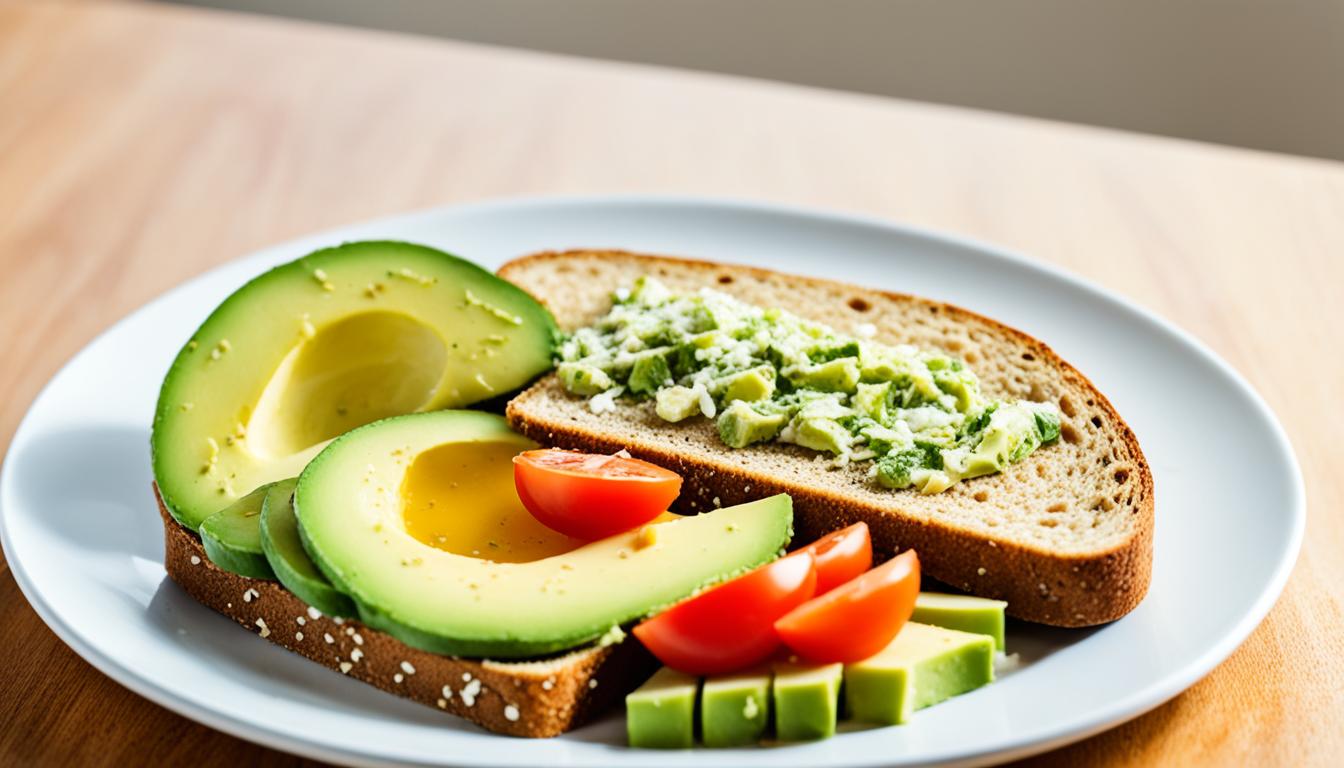Originally posted on March 26, 2024 @ 8:11 pm
Have you ever wondered if you can omit wheat germ from your recipes? Whether you’re allergic to gluten or simply don’t have any on hand, the idea of leaving out a key ingredient might sound risky. But is it really? Can you still achieve delicious and satisfying dishes without wheat germ? Let’s find out!
Contents
- 1 The Role of Wheat Germ in Recipes
- 2 Substitutes for Wheat Germ
- 3 Oat Bran as a Substitute for Wheat Germ
- 4 Rice Bran as a Substitute for Wheat Germ
- 5 Ground Flaxseeds (Flax Meal) as a Substitute for Wheat Germ
- 6 Ground Sunflower Seeds as a Substitute for Wheat Germ
- 7 Whole Wheat Flour and Honey as a Substitute for Wheat Germ
- 8 Health Considerations and Potential Concerns with Wheat Germ
- 9 Where to Find Wheat Germ and Brand Recommendations
- 10 Conclusion
- 11 FAQ
- 11.1 Can I omit wheat germ from a recipe?
- 11.2 What is the role of wheat germ in recipes?
- 11.3 What are some substitutes for wheat germ?
- 11.4 How can I use oat bran as a substitute for wheat germ?
- 11.5 Can I use rice bran as a substitute for wheat germ?
- 11.6 How can I use ground flaxseeds as a substitute for wheat germ?
- 11.7 Can I use ground sunflower seeds as a substitute for wheat germ?
- 11.8 How can I use whole wheat flour and honey as a substitute for wheat germ?
- 11.9 What are the health considerations and potential concerns with wheat germ?
- 11.10 Where can I find wheat germ and do you have any brand recommendations?
- 12 Source Links
Key Takeaways:
- Yes, you can omit wheat germ from your recipes if you don’t have any on hand or if you’re allergic to gluten.
- Wheat germ adds a nutty taste and crunch to baked goods, so omitting it may affect the texture and flavor of the dish.
- There are alternative ingredients you can use as substitutes for wheat germ to maintain texture and taste.
The Role of Wheat Germ in Recipes
Wheat germ plays a crucial role as an ingredient in various recipes, adding both flavor and texture. It is obtained by milling whole wheat grains and is widely utilized in baking and cooking. With its nutty taste and crunchy consistency, wheat germ enhances the overall eating experience of baked goods.
When wheat germ is incorporated into recipes, it contributes a unique flavor profile that complements the other ingredients. Its nuttiness adds depth and richness to dishes, making them more enjoyable. Additionally, the texture provided by wheat germ brings a delightful crunch to baked goods, creating a pleasant contrast.
“Wheat germ adds a nutty flavor and crunchy texture to recipes, improving the taste and mouthfeel of baked goods.”
With the inclusion of wheat germ, recipes such as muffins, bread, cookies, and granola bars gain distinct characteristics that enhance their overall appeal. The presence of this ingredient adds complexity and depth to the flavors, elevating ordinary recipes to a more noteworthy culinary experience.
However, if there are reasons or dietary restrictions that require the omission of wheat germ from a recipe, there are alternative ingredients available that can help achieve a similar taste and texture. These substitutes provide the opportunity to explore different flavor profiles while still maintaining the desired qualities of the dish.
The Benefits of Wheat Germ in Recipes
Wheat germ offers several benefits when used in recipes:
- Enhanced flavor: The nutty taste of wheat germ adds a delicious element to a wide range of dishes.
- Improved texture: The crunchy consistency of wheat germ contributes to a more enjoyable mouthfeel.
- Nutritional value: Wheat germ is a good source of various nutrients, including fiber, protein, and essential vitamins and minerals.
Adding wheat germ to recipes not only enhances the taste and texture but also increases the nutritional value of the dish.
While wheat germ is a valuable ingredient in recipes, it is not essential. By exploring alternative options, you can still create delicious and satisfying dishes.
Substitutes for Wheat Germ

If you need to omit wheat germ from a recipe, there are several substitutes you can use. These alternatives offer similar nutty flavors and textures and can be used in equal amounts as a replacement for wheat germ in recipes. Each substitute may slightly alter the flavor and texture of the dish, so it’s best to experiment and find the substitute that works best for your specific recipe.
Oat Bran
Oat bran is a nutritious substitute for wheat germ that offers a similar nutty taste and slight crunch. It is gluten-free and rich in fiber, iron, protein, and omega-3 fatty acids. When using oat bran as a substitute, simply use an equal amount as specified in the recipe to maintain the desired texture and flavor.
Rice Bran
Rice bran is another gluten-free alternative to wheat germ that imparts a light and crispy texture to baked goods. It is high in iron and B vitamins and can be used in equal amounts as a replacement for wheat germ. Adding a bit of honey or agave sweetener to your recipe can help achieve a similar color to wheat germ. It’s important to store rice bran in an airtight container in the refrigerator or freezer to maintain freshness.
Ground Flaxseeds (Flax Meal)
Ground flaxseeds, also known as flax meal, are a gluten-free and nutrient-packed substitute for wheat germ. They have a dark color, nutty flavor, and similar consistency. Flax meal is rich in fiber, calcium, omega-3 fatty acids, and iron, making it an excellent alternative to wheat germ. Use an equal amount of ground flaxseeds as specified in the recipe to achieve the desired texture and taste.
Ground Sunflower Seeds
Ground sunflower seeds can be used as a substitute for wheat germ to add texture, protein, and fiber to baked goods. They are lower in carbs compared to wheat germ and have a similar amount of protein. When using ground sunflower seeds as a substitute, keep in mind that they may not provide the same sweetness as wheat germ. Use an equal amount of ground sunflower seeds in your recipe to maintain the desired texture.
In summary, when omitting wheat germ from your recipes, you have several options to choose from. Oat bran, rice bran, ground flaxseeds, and ground sunflower seeds can all serve as excellent substitutes. Each alternative provides its own unique flavor and texture, allowing you to create delicious dishes while accommodating your dietary needs. Experiment with these wheat germ alternatives and discover the perfect substitute for your favorite recipes!
Oat Bran as a Substitute for Wheat Germ
Oat bran is a versatile and healthy alternative to wheat germ that can be used in a variety of recipes. Not only is it gluten-free, but it also offers a similar nutty taste and adds a slight crunch to your dishes. When using oat bran as a substitute for wheat germ, simply use an equal amount as specified in the recipe to maintain the desired texture and flavor.
Oat bran is packed with nutrients, making it a great addition to your gluten-free recipes. It is rich in fiber, which promotes healthy digestion and helps you feel fuller for longer. Additionally, oat bran is a good source of iron, protein, and omega-3 fatty acids, which are essential for overall health.
Here is a simple gluten-free recipe that showcases the versatility of oat bran as a substitute for wheat germ.
Gluten-Free Oat Bran Muffins
Ingredients:
- 1 ½ cups oat bran
- ½ cup gluten-free flour blend
- 1 teaspoon baking powder
- ½ teaspoon baking soda
- ¼ teaspoon salt
- 1/3 cup honey
- 1 cup almond milk (or any non-dairy milk of your choice)
- 2 eggs
- 1 teaspoon vanilla extract
- ¼ cup melted coconut oil
- 1 cup fresh or frozen blueberries
Instructions:
- Preheat your oven to 375°F (190°C) and line a muffin tin with paper liners.
- In a large bowl, combine the oat bran, gluten-free flour blend, baking powder, baking soda, and salt.
- In a separate bowl, whisk together the honey, almond milk, eggs, vanilla extract, and melted coconut oil.
- Pour the wet ingredients into the dry ingredients and stir until just combined. Do not overmix.
- Gently fold in the blueberries.
- Spoon the batter into the prepared muffin tin, filling each cup about 2/3 full.
- Bake for 15-18 minutes, or until a toothpick inserted into the center of a muffin comes out clean.
- Remove the muffins from the oven and let them cool in the tin for 5 minutes.
- Transfer the muffins to a wire rack to cool completely before serving.
These gluten-free oat bran muffins are delicious, moist, and packed with flavor. The oat bran adds a wonderful texture and taste, making them a perfect breakfast or snack option. Enjoy them fresh out of the oven or store them in an airtight container for future enjoyment.
Rice Bran as a Substitute for Wheat Germ
Rice bran is a fantastic gluten-free alternative to wheat germ that can be used to add a light and crispy texture to your baked goods. As an excellent source of iron and B vitamins, rice bran offers nutritional benefits while providing a similar taste and texture to wheat germ.
When substituting rice bran for wheat germ, you can use it in equal amounts to ensure the desired results in your recipes. To achieve a color similar to wheat germ, consider adding a small amount of honey or agave sweetener to your recipe.
It’s crucial to store your rice bran in an airtight container in either the refrigerator or freezer. This practice helps maintain its freshness and prevents the ingredients from becoming rancid.
If you’re looking to create gluten-free bread or other baked goods without wheat germ, rice bran can be your go-to substitute.
| Rice Bran | Wheat Germ |
|---|---|
| Gluten-free | Contains gluten |
| Imparts light and crispy texture | Provides nutty taste and crunch |
| High in iron and B vitamins | Rich in vitamin E and folate |
Ground Flaxseeds (Flax Meal) as a Substitute for Wheat Germ

Ground flaxseeds, also known as flax meal, are an excellent gluten-free alternative to wheat germ. Not only do they provide a similar dark color, nutty flavor, and consistent texture, but they are also packed with a variety of nutrients. Flax meal is rich in fiber, calcium, omega-3 fatty acids, and iron, making it a nutritious choice for those who want to omit wheat germ from their recipes.
To substitute ground flaxseeds for wheat germ in your recipe, simply use an equal amount as specified. This will help you achieve the desired texture and taste without compromising the nutritional value of your dish. Whether you’re making gluten-free bread or adding a healthy twist to your baked goods, ground flaxseeds are a versatile option.
Here’s an overview of the benefits of using ground flaxseeds as a substitute for wheat germ:
| BENEFITS | GROUND FLAXSEEDS | WHEAT GERM |
|---|---|---|
| Nutrient Content | Rich in fiber, calcium, omega-3 fatty acids, and iron | Contains vitamin E, folate, and several minerals |
| Nutritional Profile | Offers a spectrum of essential nutrients | Provides a range of vitamins and minerals |
| Texture | Contributes to a consistent texture | Imparts a nutty taste and crunchy texture |
| Gluten-Free | Perfect for those with gluten sensitivities or intolerances | Contains gluten, which may not be suitable for everyone |
By using ground flaxseeds as a substitute for wheat germ, you can create delicious and gluten-free recipes without compromising flavor or nutritional value. So go ahead and experiment with this versatile ingredient in your favorite dishes!
Next, let’s explore another substitute for wheat germ: ground sunflower seeds.
Ground Sunflower Seeds as a Substitute for Wheat Germ

Ground sunflower seeds offer a nutritious and flavorful alternative to wheat germ in your recipes. They can be used as a substitute to add texture, protein, and fiber to your baked goods. Here’s why ground sunflower seeds are a great wheat germ alternative:
- Lower in carbs: Ground sunflower seeds contain fewer carbohydrates compared to wheat germ, making them suitable for those following a low-carb diet.
- Protein-packed: Sunflower seeds are a good source of plant-based protein, providing a similar amount of protein as wheat germ.
- Fiber-rich: Just like wheat germ, ground sunflower seeds are rich in dietary fiber, which promotes digestion and supports overall gut health.
When using ground sunflower seeds as a substitute for wheat germ, it’s important to keep in mind that their sweetness may differ. However, the texture and nutritional benefits they offer are comparable. To maintain the desired texture in your recipes, use an equal amount of ground sunflower seeds as specified for wheat germ.
If you’re looking to add ground sunflower seeds to your pantry, you can find them at most grocery stores or purchase them online. They are typically available in both whole and pre-ground forms.
Here’s a simple table comparing the nutritional profile of ground sunflower seeds and wheat germ:
| Nutrient | Ground Sunflower Seeds | Wheat Germ |
|---|---|---|
| Carbohydrates (g) | 7 | 23 |
| Protein (g) | 6 | 8 |
| Fiber (g) | 3 | 3 |
Using ground sunflower seeds as a substitute for wheat germ is a nutritious choice that adds both flavor and texture to your recipes. Whether you’re looking to avoid gluten, reduce carbs, or experiment with new ingredients, ground sunflower seeds offer a viable alternative. Try incorporating them into your favorite recipes and enjoy the added nutritional benefits they provide.
Whole Wheat Flour and Honey as a Substitute for Wheat Germ

If you find yourself without wheat germ but have whole wheat flour and honey on hand, fear not! You can still create a healthy and flavorful substitute. This combination of whole wheat flour and honey can be used in recipes that call for both all-purpose flour and wheat germ.
Whole wheat flour is an excellent substitute for wheat germ in terms of nutrition. It is high in fiber and iron, providing similar health benefits to wheat germ. Additionally, whole wheat flour adds a nutty flavor to your dishes, enhancing their taste.
However, to mimic the sweet flavor that wheat germ brings, you’ll want to include a small amount of honey in your recipe. Honey lends a natural sweetness that complements the nuttiness of the whole wheat flour, resulting in a delicious final product.
Note: This substitute is not gluten-free. If you require a gluten-free alternative for wheat germ, please refer to the other substitutes mentioned in this article.
| Ingredient | Quantity |
|---|---|
| Whole Wheat Flour | 1 cup |
| Honey | 1-2 tablespoons |
To use whole wheat flour and honey as a substitute for wheat germ, follow these steps:
- Replace the wheat germ in your recipe with an equal amount of whole wheat flour.
- Add 1-2 tablespoons of honey to the recipe to replicate the sweet flavor of wheat germ.
- Continue following the rest of the recipe as directed, making any necessary adjustments based on the substitution.
With this simple modification, you can enjoy your favorite dishes without compromising on flavor or nutrition.
Health Considerations and Potential Concerns with Wheat Germ
While wheat germ offers nutritional benefits, it’s essential to be aware of some health considerations and potential concerns related to its consumption. Wheat germ is derived from the germ portion of the wheat kernel and is not a “whole” product in itself. To ensure a more complete nutritional profile, some experts recommend using whole wheat flour instead of solely relying on wheat germ as an ingredient.
The fatty acid profile of wheat germ is predominantly polyunsaturated, which may be a concern for individuals who need to closely monitor their intake of certain fats. It’s important to maintain a balanced diet and consider the overall composition of your meals when incorporating wheat germ into your recipes.
Additionally, some individuals may experience difficulty digesting wheat germ or have sensitivities to its high oxalate content. These individuals may be at a higher risk of developing kidney stones or experiencing digestive issues, such as diarrhea. It’s always advisable to pay attention to your body’s responses and consult a healthcare professional if you have any concerns or pre-existing health conditions.
Expert Insight:
“While wheat germ can be a valuable source of nutrients, it’s important to understand that it’s only one component of the wheat kernel. To derive the maximum benefits, it’s recommended to consume whole wheat flour instead, as it retains the bran and endosperm portions, which provide additional fiber and essential nutrients.”
– Dr. Emily Thompson, Registered Dietitian
The Digestive Impact:
Some individuals may wonder about the direct impact of wheat germ on digestion. While wheat germ does contain fiber, which can promote healthy digestion, it’s essential to note that individual responses may vary. Some people may experience improved digestion and regularity, while others may find that their digestive system is sensitive to wheat germ or high fiber content.
If you have pre-existing digestive conditions, such as irritable bowel syndrome (IBS) or celiac disease, it’s recommended to consult with a healthcare professional before incorporating wheat germ into your diet. They can provide personalized advice and guidance based on your specific needs and health considerations.
To make informed decisions about your diet, pay attention to your body’s responses and consider experimenting with alternative ingredients or substitutes if necessary. Prioritizing a well-rounded and balanced diet is key to maintaining overall health and well-being.
Where to Find Wheat Germ and Brand Recommendations
If you’re interested in incorporating wheat germ into your recipes or want to give it a try, you can find it in most larger supermarkets or online. Some popular brands of wheat germ include Bob’s Red Mill and Kretschmer. It’s important to store wheat germ in an airtight container in the refrigerator to prolong its shelf life and maintain freshness.
Conclusion
In conclusion, omitting wheat germ from your recipes does not mean sacrificing flavor or nutrition. There are plenty of substitutes available that can provide similar texture and taste. If you’re looking for a nutty flavor and slight crunch, oat bran is an excellent alternative. Rice bran offers a crispy texture and is perfect for gluten-free baking. Ground flaxseeds, or flax meal, provide a dark, nutty flavor and are packed with nutrients. And if you’re looking for added protein and fiber, ground sunflower seeds are a great choice.
When using these substitutes, keep in mind that each one has its own unique characteristics, so it’s important to experiment and find the one that best suits your recipe. Also, consider any health considerations and concerns associated with wheat germ, such as digestion issues or high oxalate content. Make sure to adjust your recipe accordingly and use alternative ingredients as needed.
With some creativity and recipe modification, you can omit wheat germ and still enjoy delicious and satisfying meals. Whether you’re baking bread, making granola, or adding a nutritious boost to your smoothies, these substitutes will ensure that you can continue to cook without wheat germ while maintaining the flavor and texture you desire. So go ahead, get creative in the kitchen, and explore the possibilities of omitting wheat germ from your recipes!
FAQ
Can I omit wheat germ from a recipe?
Yes, you can omit wheat germ from your recipes if you don’t have any on hand or if you’re allergic to gluten. However, it’s important to note that wheat germ adds a nutty taste and crunch to baked goods, so omitting it may affect the texture and flavor of the dish.
What is the role of wheat germ in recipes?
Wheat germ is a product of milling whole wheat and is often used as an ingredient in various recipes. It adds a nutty flavor and crunchy texture to baked goods, making them more enjoyable to eat.
What are some substitutes for wheat germ?
Some popular substitutes for wheat germ include oat bran, rice bran, ground flaxseeds (flax meal), and ground sunflower seeds. These alternatives offer similar nutty flavors and textures and can be used in equal amounts as a replacement for wheat germ in recipes.
How can I use oat bran as a substitute for wheat germ?
Oat bran is a nutritious alternative to wheat germ that offers a similar nutty taste and slight crunch. It is gluten-free and rich in fiber, iron, protein, and omega-3 fatty acids. When using oat bran as a substitute, simply use an equal amount as specified in the recipe to maintain the desired texture and flavor.
Can I use rice bran as a substitute for wheat germ?
Yes, rice bran is another gluten-free substitute for wheat germ that imparts a light and crispy texture to baked goods. It is high in iron and B vitamins and can be used in equal amounts as a replacement for wheat germ. Adding a bit of honey or agave sweetener to your recipe can help achieve a similar color to wheat germ. It’s important to store rice bran in an airtight container in the refrigerator or freezer to maintain freshness.
How can I use ground flaxseeds as a substitute for wheat germ?
Ground flaxseeds, also known as flax meal, are a gluten-free and nutrient-packed substitute for wheat germ. They have a dark color, nutty flavor, and similar consistency. Flax meal is rich in fiber, calcium, omega-3 fatty acids, and iron, making it an excellent alternative to wheat germ. Use an equal amount of ground flaxseeds as specified in the recipe to achieve the desired texture and taste.
Can I use ground sunflower seeds as a substitute for wheat germ?
Yes, ground sunflower seeds can be used as a substitute for wheat germ to add texture, protein, and fiber to baked goods. They are lower in carbs compared to wheat germ and have a similar amount of protein. When using ground sunflower seeds as a substitute, keep in mind that they may not provide the same sweetness as wheat germ. Use an equal amount of ground sunflower seeds in your recipe to maintain the desired texture.
How can I use whole wheat flour and honey as a substitute for wheat germ?
If you have whole wheat flour and honey on hand, you can use them as a substitute for wheat germ. This combination can be used in recipes that call for both all-purpose flour and wheat germ. Whole wheat flour is similar to wheat germ in terms of nutrition, as it is high in fiber and iron. Adding a small amount of honey helps to mimic the sweet flavor of wheat germ. Keep in mind that this substitute is not gluten-free.
What are the health considerations and potential concerns with wheat germ?
While wheat germ offers nutritional benefits, there are some health considerations and potential concerns to be aware of. Some experts recommend using whole wheat flour instead of just wheat germ to ensure a more complete nutritional profile. Additionally, the fatty acid profile of wheat germ is mostly polyunsaturated, which can be a concern for some individuals. Some people may also have difficulty digesting wheat germ or may be sensitive to its high oxalate content, which can cause kidney stones or diarrhea in some cases.
Where can I find wheat germ and do you have any brand recommendations?
If you’re interested in incorporating wheat germ into your recipes or want to give it a try, you can find it in most larger supermarkets or online. Some popular brands of wheat germ include Bob’s Red Mill and Kretschmer. It’s important to store wheat germ in an airtight container in the refrigerator to prolong its shelf life and maintain freshness.








